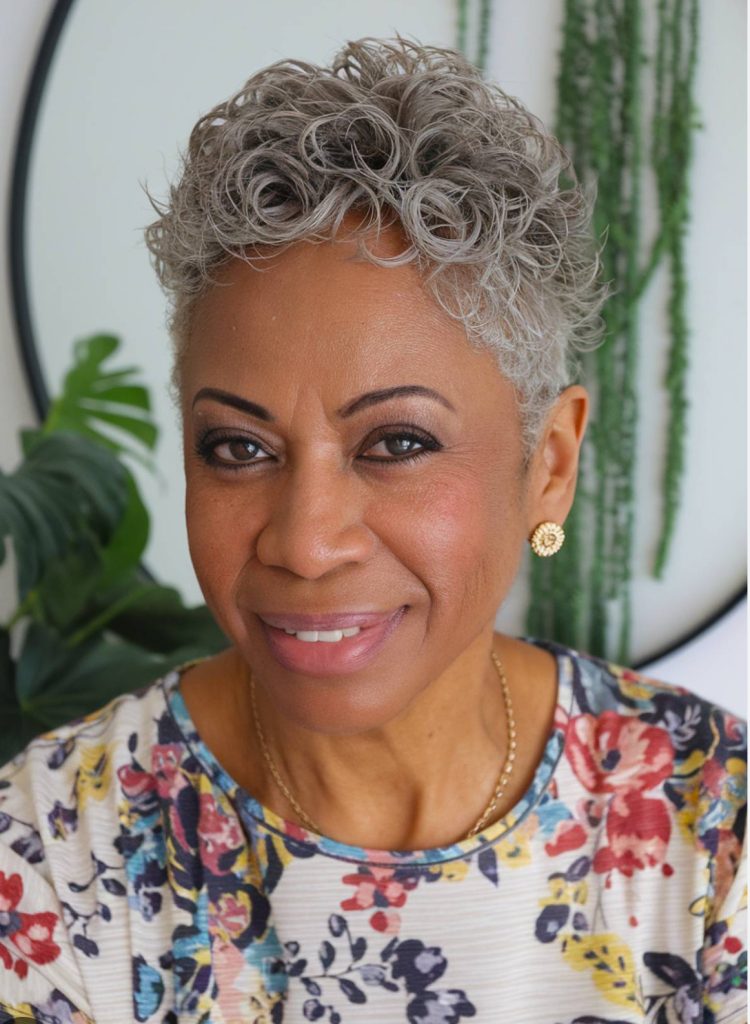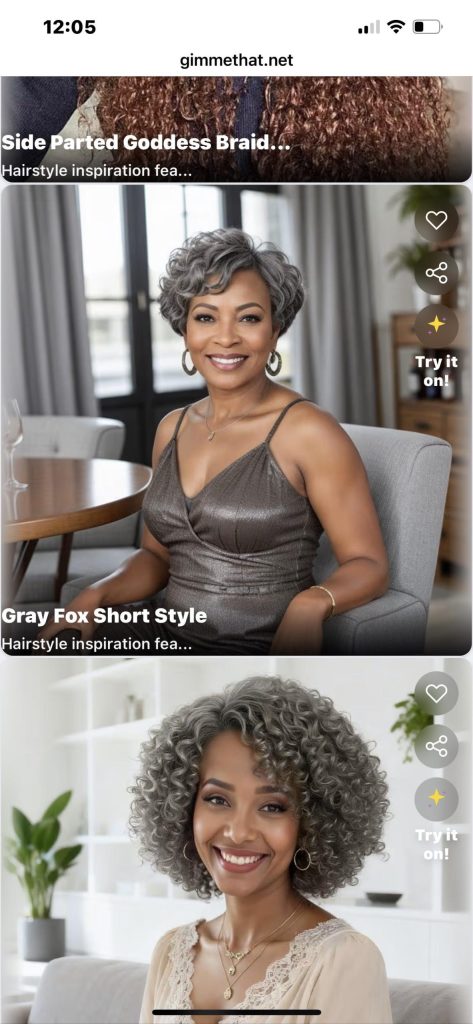You know the feeling. You scroll Instagram, save a photo of a stunning Fulani braid style or a sharp bob, and take it to your stylist. She executes it perfectly. Technical precision? 10/10. But when you look in the mirror, something is… off. It doesn’t look like the picture. In fact, it makes your forehead look massive or your jaw look wider than usual.
You didn’t get a bad install. You got a style that fought against your facial geometry.
Here’s the truth the beauty industry often glosses over: Most “face shape guides” are written for straight hair that lays flat against the skull. When you have texture, volume, and coils, the rules change. We aren’t just framing a face; we are sculpting a silhouette. If you treat your crown like a frame and your face like the art, you realize that the wrong frame can cheapen even the most beautiful masterpiece.
The “Standard” Advice vs. The Textured Reality
Most generic beauty blogs will tell you things like “get bangs to shorten a long face.” While true in theory, for a Black woman with 4C hair, “bangs” isn’t just a quick snip. It’s a commitment to managing shrinkage, fighting reversion on humid days, or committing to a silk press. We have to translate standard cosmetology theory into natural hair reality.
Your face shape is determined by three main factors: the width of your forehead, cheekbones, and jawline, and the length of your face from hairline to chin. Understanding this geometry prevents you from spending $300 on a protective style that essentially hides your best features.
The 6 Shapes: A Natural Hair Translation
1. The Oval Face (The Universal Donor)
The Geometry: Your face length is longer than the width, and your jawline is slightly narrower than your hairline. No sharp corners. Think Rihanna or darker-skinned beauties like Justine Skye.
The Strategy: You hit the jackpot. Oval faces are balanced, meaning you don’t need to use hair to “correct” anything. Your main goal is simply not to ruin that balance.
- Natural Styles: Slicked-back puffs, center-part cornrows, massive afros, and baldies all work.
- The Risk: Covering your face too much. Avoid heavy, forward-falling styles that hide your perimeter. Let that bone structure breathe.
This is where I started.

GimmeThat.net

Final Results

This was my final look, Tell me What you think in the comments?
I would like to thank GimmeThat.net for making this FREE hair tool made just for our hair types!
2. The Round Face (The “Baby Face”)
The Geometry: The width and length are roughly the same. No prominent angles. You likely look younger than you are.
The Strategy: Elongation. You want to create the illusion of length. Horizontal volume (like a wide, round afro) can make your face look wider. Vertical volume is your best friend.
- Natural Styles: High puffs (pineapples), tall updos, or faux hawks. If you wear braids, opt for long, waist-length box braids that draw the eye down.
- Avoid: Chin-length bobs or round-cut afros that mirror the circle of your face.
3. The Square Face (The Power Jaw)
The Geometry: Wide forehead, wide cheekbones, and a strong, angular jawline. The width and length are similar. Think of the striking features of Grace Jones (though hers leans rectangular).
The Strategy: Softening. You want to offset the sharp angles with soft textures. Curls, waves, and asymmetry work wonders here.
- Natural Styles: Twist-outs and braid-outs are perfect because the texture softens the jawline. Side parts are superior to center parts here, as they break up the symmetry of the square.
- Avoid: Blunt, chin-length bobs or severe, tight slick-backs that emphasize the squareness (unless you want a very severe, editorial look).
4. The Heart Face (The Widow’s Peak)
The Geometry: Wider at the forehead and temples, tapering down to a narrow, pointed chin. You basically have killer cheekbones by default.
The Strategy: Balance the bottom. Because the chin is narrow, you want hair volume that sits around the jaw and neck to create visual width at the bottom.
- Natural Styles: Shoulder-length locs, bob-length twist outs, or “lob” (long bob) wigs. Ideally, you want the hair to flair out near the chin.
- Avoid: Top-heavy styles that add more volume to the forehead without balancing the bottom.
5. The Diamond Face (The Rare Gem)
The Geometry: Narrow forehead, narrow chin, but wide, high cheekbones. It is the rarest face shape.
The Strategy: Show off the cheeks. You want to keep hair off the face or tucked behind the ears to highlight that bone structure.
- Natural Styles: Half-up/half-down styles are iconic on diamonds. Pulled back at the temples, with volume at the crown. Side-swept bangs (or faux bangs made from twists) also work beautifully.
- Avoid: Styles that cover the cheekbones. You have the features people buy filler for—don’t hide them.
6. The Long/Oblong Face
The Geometry: Like the oval, but significantly longer than it is wide. Think Kelly Rowland.
The Strategy: Width over height. You want to expand horizontally. While round faces should avoid wide afros, oblong faces thrive with them.
- Natural Styles: Big, blown-out afros. Voluminous curly wigs. Anything that adds width to the sides of your face.
- Avoid: High buns or sky-high ponytails which only elongate the face further.
Practical Application: The Mirror Trace Test
Stop guessing. Here is the method cosmetology schools teach, adapted for you to do in your bathroom right now.
- Pull your hair back completely. Use a wig cap or gel down your edges if necessary. You need to see your true hairline and jawline.
- Stand in front of a mirror. Keep your head straight, not tilted up or down.
- Trace the outline. Using an old lipstick, eyeliner, or a dry-erase marker, trace the outline of your face on the mirror.
- Step back and analyze. Look at the shape you drew. Is it wider at the top? Does it have sharp corners? Is it long? Match it to the descriptions above.
This 2-minute exercise can save you hundreds of dollars on styles that don’t suit you. It allows you to work with your anatomy, rather than fighting it.
💡 Pro Tip: If you can’t do the mirror test right now or struggle to visualize it, you can use AI to do the heavy lifting. Upload a selfie to gimmethat.net to virtually try on different protective styles like box braids or afros on your actual face shape before you book that appointment.
The Shrinkage Factor
This is where things get controversial. Conventional hair typing says “round faces shouldn’t wear short hair.” But for a naturalista, a “short” TWA (Teeny Weeny Afro) creates a very different silhouette than a short straight bob.
Shrinkage changes your face shape framing throughout the week. A twist-out that starts at shoulder length (elongating) might shrink to chin length (widening) by day 4. When planning your style based on your face shape, you must account for the inevitable shrinkage. If you have a round face and want a twist-out, you may need to stretch your hair more aggressively or re-twist mid-week to maintain the length that balances your face.
Conclusion
Your hair is the frame, but your face is the masterpiece. While trends like knee-length knotless braids or butterfly locs are tempting, the most stylish women aren’t the ones jumping on every trend—they are the ones who know what aligns with their unique geometry.
Don’t be afraid to break the rules, but know them first. If you have a round face and crave a bob, do it—but maybe add an asymmetrical part to break up the circle. Understanding your lines gives you the power to manipulate them.
Hair Care Disclaimer: This article is for informational purposes only and is not intended as professional hair care or medical advice. The information provided has been reviewed by licensed cosmetologists and trichology experts but should not replace consultation with a qualified professional. Individual hair needs vary based on texture, porosity, density, scalp condition, and other factors. Always consult with a licensed cosmetologist, dermatologist, or trichologist before making significant changes to your hair care routine, especially if you have existing scalp conditions or are experiencing hair loss.
Content Review: This article has been reviewed by licensed cosmetologists and trichology experts for accuracy and adherence to current hair science and evidence-based practices.
References
- Schmid, K., et al. (2008). “The attractiveness of female facial symmetry and shape.” Aesthetic Plastic Surgery.
- Little, A. C., et al. (2011). “Facial attractiveness: evolutionary based research.” Philosophical Transactions of the Royal Society B: Biological Sciences.
- Fink, B., et al. (2006). “Visible skin color distribution plays a role in the perception of age, attractiveness, and health in female faces.” Evolution and Human Behavior.
- Malkin, I., et al. (2006). “The association between facial shape and hair texture.” American Journal of Physical Anthropology.
- Cunningham, M. R. (1986). “Measuring the physical in physical attractiveness: Quasi-experiments on the sociobiology of female facial beauty.” Journal of Personality and Social Psychology.

